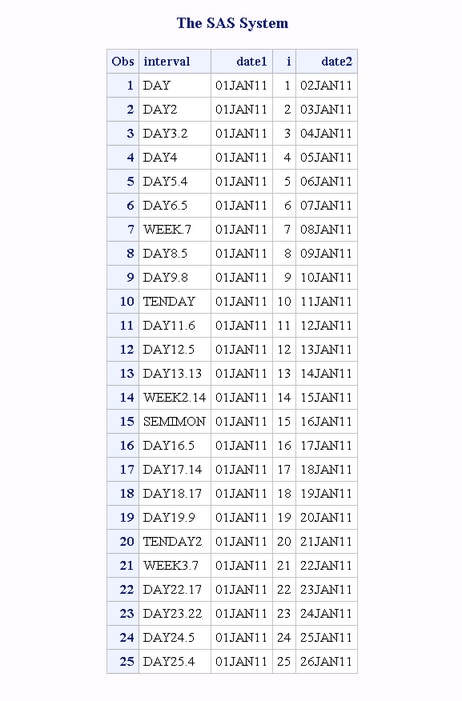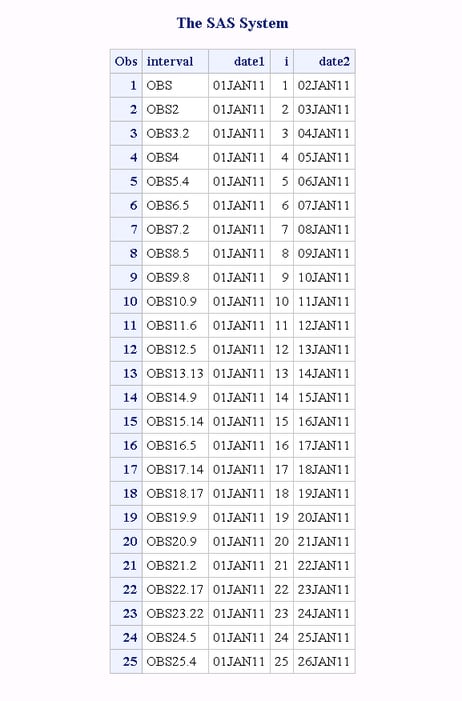INTFIT Function
Returns a time interval that is aligned between two dates.
| Category: | Date and Time |
Syntax
Required Arguments
argument
specifies a SAS expression that represents a SAS date or datetime value, or an observation.
| Tip | Observation numbers are more likely to be used as arguments if date or datetime values are not available. |
'type'
specifies whether the arguments are SAS date values, datetime values, or observations.
| d | specifies that argument-1 and argument-2 are date values. |
| dt | specifies that argument-1 and argument-2 are datetime values. |
| obs | specifies that argument-1 and argument-2 are observations. |
Details
The INTFIT function
returns the most likely time interval based on two dates, datetime
values, or observations that have been aligned within an interval.
INTFIT assumes that the alignment value is SAME, which specifies that
the date is aligned to the same calendar date with the corresponding
interval increment. For more information about the alignment argument,
see INTNX Function.
If the arguments that
are used with INTFIT are observations, you can determine the cycle
of an occurrence by using observation numbers. In the following example,
the first two arguments of INTFIT are observation numbers, and the type argument
is
obs. If Jason used the gym the first time
and the 25th time that a researcher recorded data, you could determine
the interval by using the following statement: interval=intfit(1,25,'obs');.
In this case, the value of interval is OBS24.2.
The INTFIT function
can also be used with calendar intervals from the retail industry.
These intervals are ISO 8601 compliant. For more information, see Retail Calendar Intervals: ISO 8601 Compliant in SAS Language Reference: Concepts.
Examples
Example 1: Finding Intervals That Are Aligned between Two Dates
The following example
shows the intervals that are aligned between two dates. The type argument
in this example identifies the input as date values.
data a;
length interval $20;
date1='01jan11'd;
do i=1 to 25;
date2=intnx('day', date1, i);
interval=intfit(date1, date2, 'd');
output;
end;
format date1 date2 date.;
run;
proc print data=a;
run;The output shows that
if the increment value is one day, then the result of the INTFIT function
is DAY. If the increment value is two days, then the result of the
INTFIT function is DAY2. If the increment value is three days, then
the result is DAY3.2, with a shift index of 3. (If the two input dates
are a Friday and a Monday, then the result is WEEKDAY.) If the increment
value is seven days, then the result is WEEK.
Example 2: Finding Intervals That Are Aligned between Two Dates When the Dates Are Identified As Observations
The following example
shows the intervals that are aligned between two dates. The type argument
in this example identifies the input as observations.
Copyright © SAS Institute Inc. All rights reserved.

